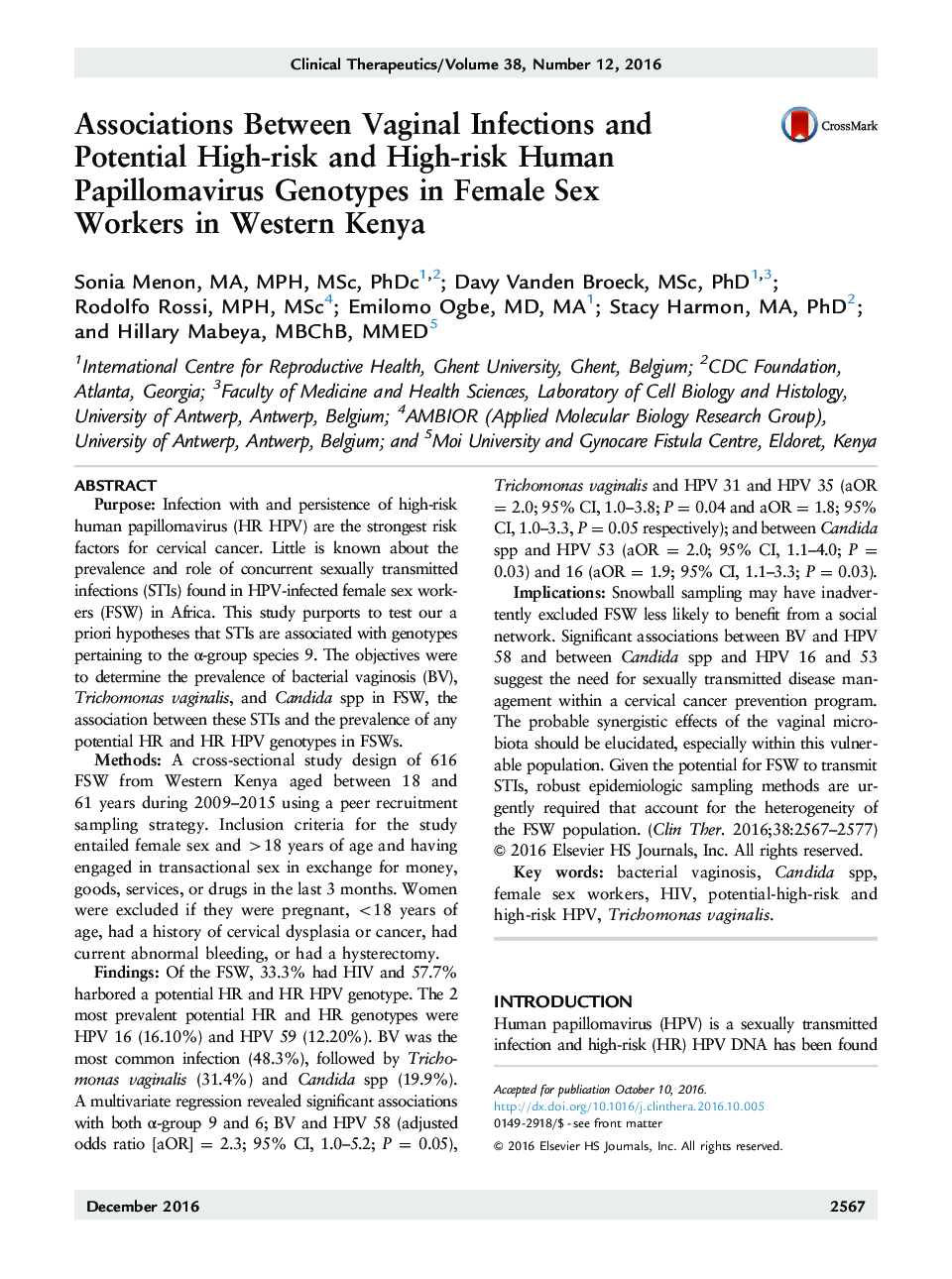| کد مقاله | کد نشریه | سال انتشار | مقاله انگلیسی | نسخه تمام متن |
|---|---|---|---|---|
| 5554126 | 1403023 | 2016 | 11 صفحه PDF | دانلود رایگان |
PurposeInfection with and persistence of high-risk human papillomavirus (HR HPV) are the strongest risk factors for cervical cancer. Little is known about the prevalence and role of concurrent sexually transmitted infections (STIs) found in HPV-infected female sex workers (FSW) in Africa. This study purports to test our a priori hypotheses that STIs are associated with genotypes pertaining to the α-group species 9. The objectives were to determine the prevalence of bacterial vaginosis (BV), Trichomonas vaginalis, and Candida spp in FSW, the association between these STIs and the prevalence of any potential HR and HR HPV genotypes in FSWs.MethodsA cross-sectional study design of 616 FSW from Western Kenya aged between 18 and 61 years during 2009-2015 using a peer recruitment sampling strategy. Inclusion criteria for the study entailed female sex and >18 years of age and having engaged in transactional sex in exchange for money, goods, services, or drugs in the last 3 months. Women were excluded if they were pregnant, <18 years of age, had a history of cervical dysplasia or cancer, had current abnormal bleeding, or had a hysterectomy.FindingsOf the FSW, 33.3% had HIV and 57.7% harbored a potential HR and HR HPV genotype. The 2 most prevalent potential HR and HR genotypes were HPV 16 (16.10%) and HPV 59 (12.20%). BV was the most common infection (48.3%), followed by Trichomonas vaginalis (31.4%) and Candida spp (19.9%). A multivariate regression revealed significant associations with both α-group 9 and 6; BV and HPV 58 (adjusted odds ratio [aOR] = 2.3; 95% CI, 1.0-5.2; P = 0.05), Trichomonas vaginalis and HPV 31 and HPV 35 (aOR = 2.0; 95% CI, 1.0-3.8; P = 0.04 and aOR = 1.8; 95% CI, 1.0-3.3, P = 0.05 respectively); and between Candida spp and HPV 53 (aOR = 2.0; 95% CI, 1.1-4.0; P = 0.03) and 16 (aOR = 1.9; 95% CI, 1.1-3.3; P = 0.03).ImplicationsSnowball sampling may have inadvertently excluded FSW less likely to benefit from a social network. Significant associations between BV and HPV 58 and between Candida spp and HPV 16 and 53 suggest the need for sexually transmitted disease management within a cervical cancer prevention program. The probable synergistic effects of the vaginal microbiota should be elucidated, especially within this vulnerable population. Given the potential for FSW to transmit STIs, robust epidemiologic sampling methods are urgently required that account for the heterogeneity of the FSW population.
Journal: Clinical Therapeutics - Volume 38, Issue 12, December 2016, Pages 2567-2577
